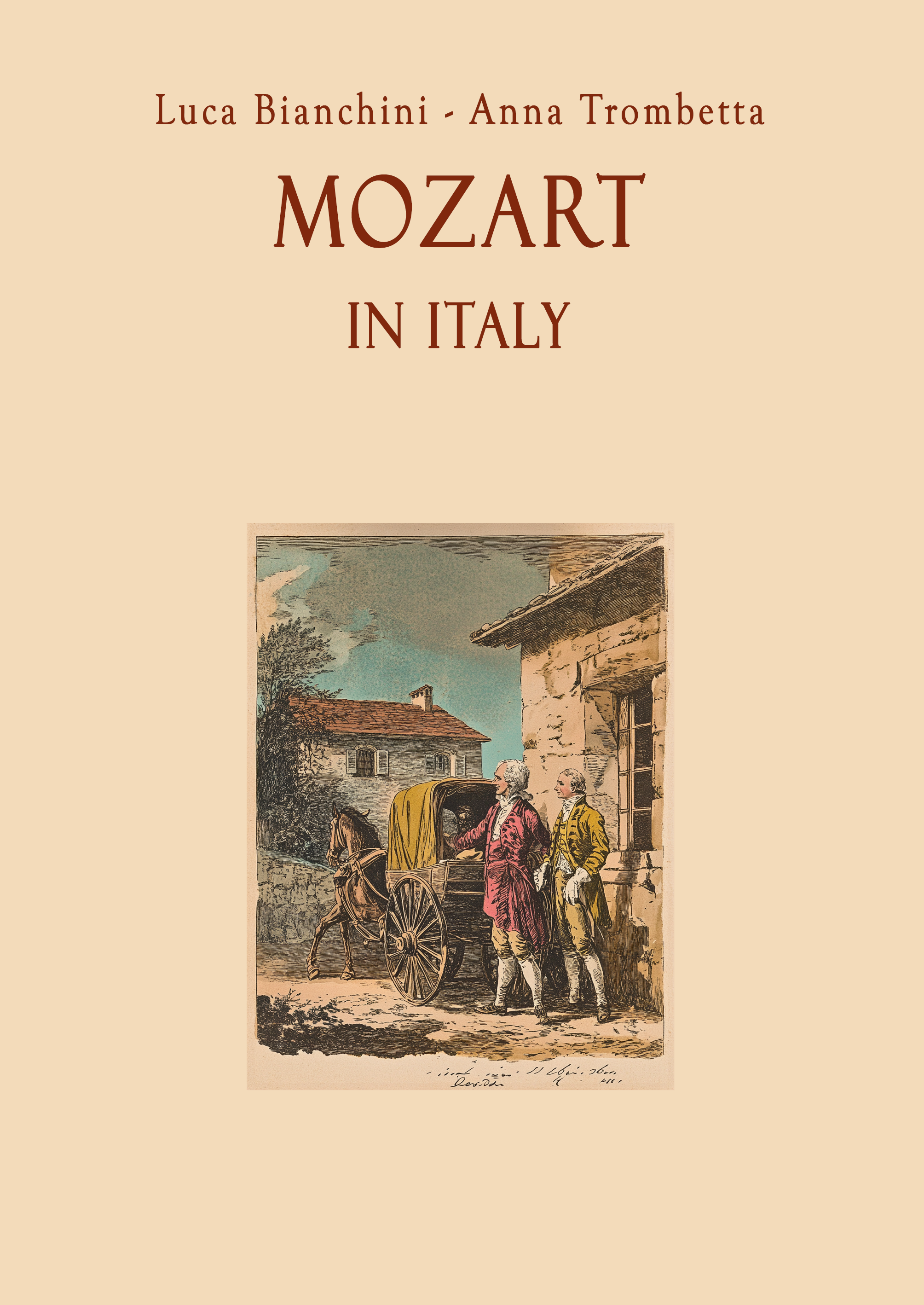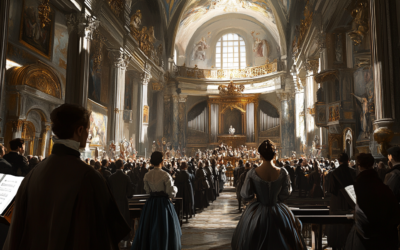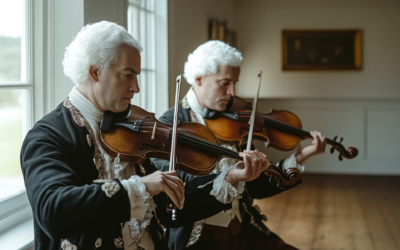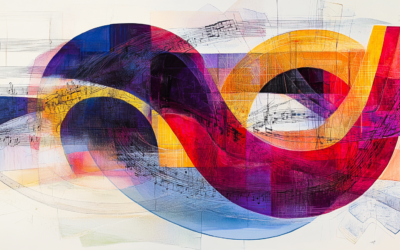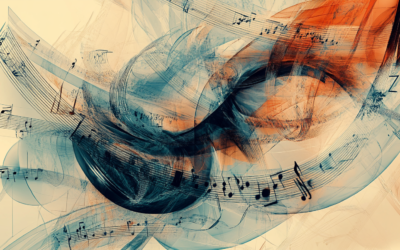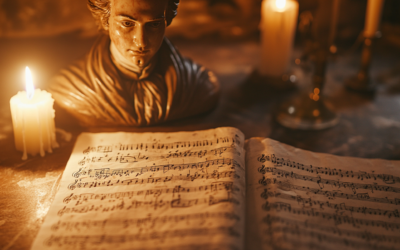Rediscovering Musical Roots
The World Premiere of Gasparini and Mysliveček
How a Historic Performance Challenges the Mozart Myth and Sheds Light on Overlooked Masters
This December, history will come alive as the Camerata Rousseau unveils forgotten treasures by Quirino Gasparini and Josef Mysliveček. These premieres not only celebrate their artistry but also reveal the untold influence of Gasparini on Mozart’s Mitridate re di Ponto. A pivotal event for anyone passionate about rediscovering music history.
Mozart in Italy: The Untold Story
Was Mozart truly a solitary genius, or was he merely the instrument of his father’s ambition? “Mozart in Italy” challenges the conventional narrative, revealing a complex dynamic between father and son that shaped the course of music history. Prepare to question everything you thought you knew.
“History’s forgotten voices deserve to be heard—for they often carry truths that challenge our most cherished legends.”
Mozart in Italy
This December, the Camerata Rousseau will deliver an event of unparalleled significance in the world of classical music. Over three evenings in Switzerland, audiences will experience the world premieres of Quirino Gasparini’s Cembalo Concerto in F Major and the aria Al destin che la minaccia from his opera Mitridate re di Ponto. Alongside these, Josef Mysliveček’s Sinfonia in B-flat Major will also be performed, providing a rare opportunity to appreciate the brilliance of two composers often overshadowed by Mozart.
Why is this event groundbreaking? Gasparini’s works are not merely historical curiosities—they are the very foundations upon which Mozart built parts of his reputation. The aria Al destin che la minaccia is a glaring example. This exquisite piece was blatantly used by Mozart as a model for his own Mitridate re di Ponto, performed in Milan in 1770. The premiere offers modern audiences the chance to hear Gasparini’s original work, transcribed and revised with meticulous care by us, allowing listeners to appreciate its intrinsic beauty and pivotal role in shaping Mozart’s compositions.
As the program booklet highlights, Bologna—a crucial cultural hub in the 18th century—was where connections between Mysliveček, Gasparini, and Mozart were forged under the guidance of Padre Martini. Martini was a key figure, acting as a bridge among these composers, and his influence can be traced in their works. The Mozarts themselves drew heavily from this environment, taking inspiration—and sometimes outright ideas—from Mysliveček’s La Nitteti. The rediscovery of these relationships challenges long-held assumptions about Mozart’s originality and genius, offering a more nuanced view of his creative process.
The program for these concerts includes:
Saturday, 14 December 2024, 7:30 PM – Bern, Grosse Saal Konservatorium
-
Josef Mysliveček: Sinfonia in B-flat Major (World Premiere)
-
Quirino Gasparini: Cembalo Concerto in F Major (World Premiere)
-
Quirino Gasparini: Al destin che la minaccia (World Premiere)
-
Wolfgang Amadeus Mozart: Aria Voi avete un cor fedele
-
Joseph Haydn: Trauersinfonie in E minor
Sunday, 15 December 2024, 5:00 PM – Basel, Don Bosco
The same program will be performed, offering another chance to witness this historic moment.
These performances also coincide with the upcoming release of Mozart in Italy, the definitive English edition of our groundbreaking book. The translation has been professionally revised and includes significant new material, further illuminating the connections among Mysliveček, Gasparini, and Mozart. This book will provide music enthusiasts and scholars with fresh insights into how Mozart’s Italian journey shaped his career and how much he owed to the composers he encountered.
For those keen on exploring the details of Mysliveček’s Sinfonia or Gasparini’s works, Maestro Leonardo Muzii—the conductor of the Camerata Rousseau—is an invaluable resource. His expertise in historical performance practices ensures these premieres will bring the music to life with authenticity and brilliance.
This event is more than a concert series; it is a celebration of overlooked genius, a challenge to entrenched myths, and a tribute to the interconnectedness of musical history. To miss it would be to forgo a unique opportunity to hear the music that not only shaped the past but also reshapes our understanding of it today.
You May Also Like
The Forgotten Viennese Quartets
Attributing Offertorium K.34 to Mozart is not just misleading, it reflects the careless methods used by 19th-century scholars to inflate his legacy. Without an autograph or solid evidence, this work should not be considered part of his output.”
The Questionable Attribution of Mozart’s Offertorium K.34
Attributing Offertorium K.34 to Mozart is not just misleading, it reflects the careless methods used by 19th-century scholars to inflate his legacy. Without an autograph or solid evidence, this work should not be considered part of his output.”
The Mysterious Case of Mozart’s Duets: An Unfinished Story
Mozart’s string duets have long been shrouded in mystery, from his father’s heavy influence in 1768 to his supposed act of charity for a dying Michael Haydn in 1783. These unfinished works reveal more about the composer’s life and struggles than they do about his musical genius.
The Misattribution of Mozart’s K.2 89a (K.6 73i): A Questionable Canon
K.2 89a (K.6 73i), attributed to Mozart, is riddled with issues—missing voices, incomplete harmonies, and even the absence of text. Should this piece really be in his catalogue?
The Borrowed Simplicity: Mozart’s Canons K.555, K.557, and K.562
The canons K.555, K.557, and K.562, often overlooked for their simplicity, reveal striking similarities with the works of Antonio Caldara. These three pieces, dated 1788, demonstrate how Mozart adapted and simplified Caldara’s contrapuntal structures, masking his influences while reflecting the galant style of the era.
Simplicity, Errors, and the Myth of Perfection
Mozart’s canons are not as complex as often claimed, with notable errors in K.553 and K.554, and the myth of “V’amo di cuore teneramente” K.348 being debunked.

